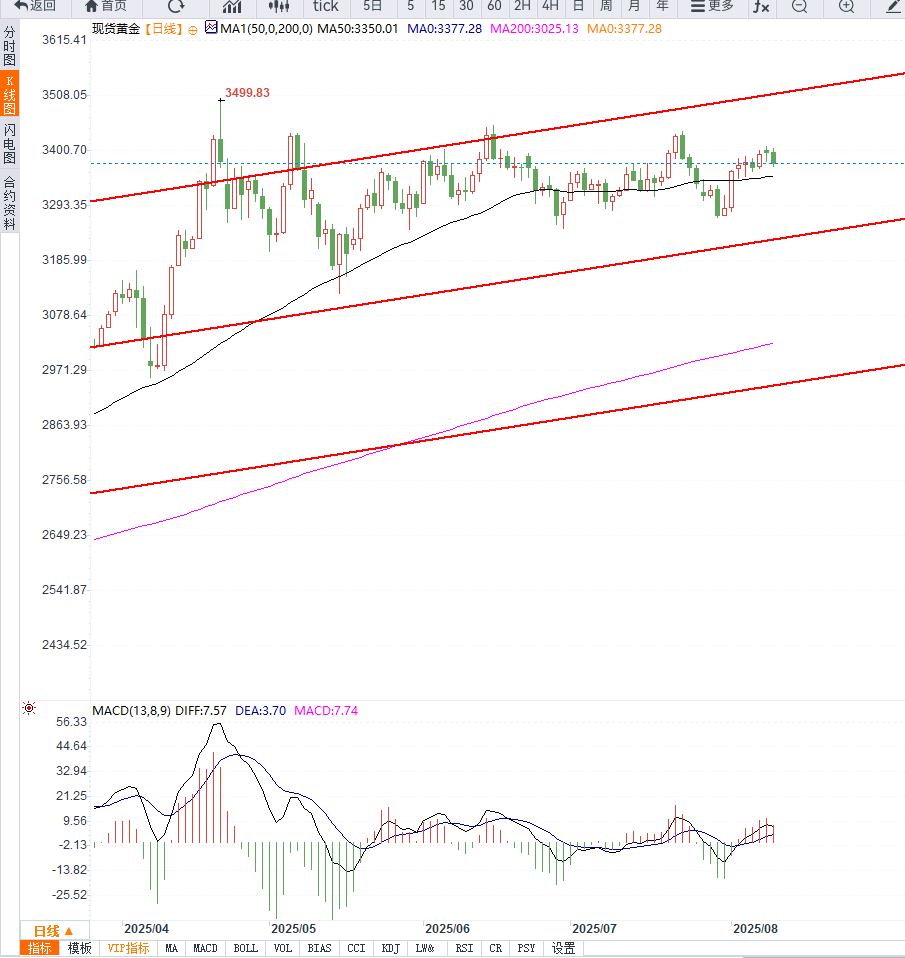Market risk appetite increased, and gold fell slightly near the pressure level, waiting to stabilize.
2025-08-11 13:31:09
However, the market remains cautious ahead of the expiration of the US tariff exemption for Asian giants on August 12, and the related uncertainty provides some support for gold prices. At the same time, the latest non-farm payroll report shows a weak US labor market, and investors are betting that the Federal Reserve will resume its interest rate cut cycle in September and cut at least twice before the end of the year.

St. Louis Fed President Musalem said the Fed faces the risk of failing to achieve both its inflation and employment goals, and the impact of tariffs on inflation may gradually weaken.
Federal Reserve Board Governor Bowman pointed out that the latest weak employment data deepened her concerns about the fragility of the labor market and strengthened her judgment on cutting interest rates three times this year.
This week, the market will focus on the U.S. Consumer Price Index (CPI) released on Tuesday and the Producer Price Index (PPI) on Thursday. At the same time, several Federal Reserve officials will deliver speeches. These factors will directly affect the short-term performance of the U.S. dollar and gold.
From the market perspective, the gold price has fallen below the key technical support of $3,380, which is formed by the 100-hour moving average and the lower track of the short-term rising channel. The hourly chart oscillator indicator continues to weaken, suggesting that there may be further downward risks in the short term.
The initial support below is in the $3,350 range. If it effectively falls below it, it may accelerate downward to $3,315, or even test the $3,300 integer.
On the contrary, the upper $3,400 mark is still an important resistance. After breaking through, it is expected to challenge the $3,430 and $3,450 areas. If it continues to hold firm, it may restart the upward trend and approach the historical high of $3,500.

Editor's Note: Gold is currently trading at a crossroads between macroeconomic and technical factors. Improved risk sentiment is limiting safe-haven buying, but expectations of a Fed rate cut and tariff uncertainty are providing price support. In the short term, CPI data could be a key catalyst to break the current range-bound fluctuations.
- Risk Warning and Disclaimer
- The market involves risk, and trading may not be suitable for all investors. This article is for reference only and does not constitute personal investment advice, nor does it take into account certain users’ specific investment objectives, financial situation, or other needs. Any investment decisions made based on this information are at your own risk.





















